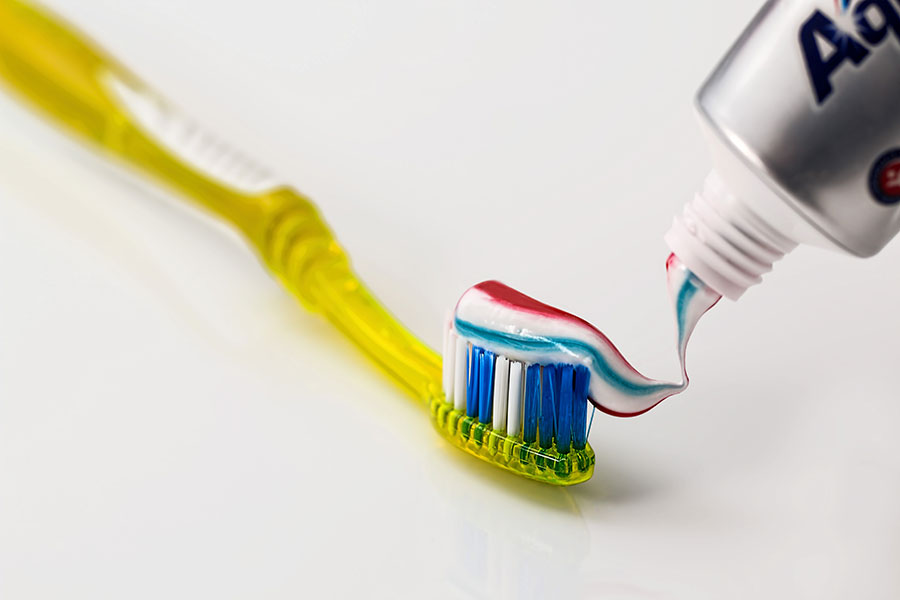Toothbrushing is such an ingrained habit, few people think twice about it. But as with any habit, you can get sloppy, and that can lead to cavities and gum disease.
Toothbrushing Mistake No. 1: Not Using the Right Toothbrush
Consider the size of your mouth when picking a toothbrush. If you are straining to open wide enough to let the brush in, the brush is probably too big. The handle has to be comfortable. It should feel as comfortable as holding a fork when you eat. The more comfortable it is in your mouth and your hand, then the more likely you will use it and use it properly.
Which is the better toothbrush: Electric or manual?
Let’s take a look at the Pros and Cons of the two and find out.
Manual Toothbrush
Pros
- Thoroughly clean teeth with proper brushing technique. Brushing only takes 2 minutes and you can most definitely keep your teeth at a grade A+ level with a manual toothbrush.
- Multiple toothbrush styles, bristles, heads and colors to choose from. You have the ability to choose soft bristles if you have sensitive gums, and a smaller head if you have a smaller mouth. Some brands even make special prints on toothbrushes for children. Nevertheless, you’ll never be short of options with manual toothbrushes.
- Easy to travel with. All you need is a toothbrush case and you’re all set to go for your trip. No need to worry about batteries or charging outlets.
- No batteries or charging.
- Inexpensive and often free whenever you make a trip to your dentist. Keep in mind that you should ditch your toothbrush after about 3 months of use.
Electric Toothbrush
Pros
- Easy to use. With a powered toothbrush, all you need to do is place the toothbrush at a 45° angle and let the toothbrush do all the work.
- Less work for better results. Studies have shown that electric toothbrushes do a better job of cleaning your mouth and removing plaque and debris.
- More fun to use for children. Children like to take the easy way out on chores. If a child never brushes their teeth because they don’t want to, try having them use an electric toothbrush. It’s less work, it tickles their teeth, and the timer will let them know they’re all done! It’s a lot easier (and more fun).
- Built in timer. Electric toothbrushes use a built in timer that stops the toothbrush once two minutes are up; no more guessing!
Manual Toothbrush
Cons
- More work.
- No timing. Manual toothbrushes require you to guess how long your brushing session will last (unless you set a two-minute timer).
Electric Toothbrush
Cons
- Charging. You’ll either have to charge your toothbrush or replace its batteries.
- Cost. Electric toothbrushes cost significantly more than a manual toothbrush. There are several types of powered toothbrushes but be prepared to pay more than you usually do.
- Not as easy to travel with. Traveling with an electric toothbrush can be a hassle. They are bulky and bringing a charger along doesn’t help with room constraints.
- Easy to break. Dropping your toothbrush can be fatal. You have to be more careful whenever using an electric toothbrush.
One last thing to point out: there have been a few studies that prove electric toothbrushes remove statistically significant more plaque compared to manual toothbrushes and are better at fighting gum disease. Despite the studies, your oral health will remain healthy (despite which type of toothbrush you use) as long as you consistently take care of your teeth. If you are on the fence of buying a powered toothbrush, talk to one of our dentists the next time you come in for a check up.
Toothbrushing Mistake No. 2: Not Brushing Often Enough or Long Enough
Softly brushing your teeth at least twice a day is recommended. ”Three times a day is best.” With too much time between brushings bacterial plaque will build up, boosting the risk of gum inflammation and other problems.
Brushing should last at least two minutes,three minutes is even better.Most people fall short of both time lines. It is often recommended to divide the mouth into quadrants and spend 30 seconds a quadrant. Some electric toothbrushes include built-in timers.
Toothbrushing Mistake No. 3: Not Picking the Right Bristles
Some toothbrushes have angled bristles, others straight. So is one type better? NO…..”It’s more related to technique than the way the bristles come out. What is important when buying a toothbrush? Bristles that are too stiff can aggravate the gums. It is recommended to use a soft-bristled brush. Bristles should be sturdy enough to remove plaque but not hard enough to damage [the teeth] when used properly.
Toothbrushing Mistake No. 4: Not Brushing Correctly
Long horizontal strokes along the gum line can lead to abrasions. Aim your bristles at the gum line at a 45-degree angle and do short strokes or vibrations. Softly brush up and down your teeth, not across your teeth. The strokes should be vertical or circular, not horizontal.
Be sure to brush outer and inner tooth surfaces, the chewing surfaces, and your tongue.
Toothbrushing Mistake No. 5: Brushing Too Often or Too Hard
While brushing your teeth three times a day is ideal, but brushing twice is must. Excessive brushing could expose the root of the tooth to irritation, and that could in turn irritate the gums. Brushing vigorously can also erode tooth enamel. The trick is to brush very gently for two to three minutes.
Toothbrushing Mistake No. 6: Skipping Inner Tooth Surfaces
Most people forget to brush the inner surfaces of teeth — the surface that your tongue presses against.
The plaque you can’t see is just as important to remove as the plaque you can see.
The most commonly skipped area, dentists say, is the inner surface of the lower front teeth.
Toothbrushing Mistake No. 7: Starting in the Same Place Each Time
Many people start brushing the same part of their mouth over and over. Start in a different place so that you don’t get lazy in the same area of your mouth.
Toothbrushing Mistake No. 8: Not Following Up With a Rinse
Bacteria can grow on an un-rinsed toothbrush. Then, the next time you brush your teeth, you may actually put old bacteria back in your mouth.
Rinsing the toothbrush after you brush will help remove any leftover toothpaste, too.
Toothbrushing Mistake No. 9: Not Letting the Toothbrush Dry
If you have a toothbrush that’s perpetually moist, it will cultivate more bacteria.
If the bristles stay soggy, you can mis-shape them as you use the brush. Or it might be a breeding ground for bacteria.
It’s a good idea to shake out the moisture, then recap it with a cap that allows air in.
Toothbrushing Mistake No. 10: Not Changing the Toothbrush Often Enough
It is recommended to get a new brush every three months, or even sooner if the bristles look frayed.Once the bristles lose their normal flexibility and start to break apart, change your toothbrush. Some brushes have coloured indicators that alert you when they need replacing.


